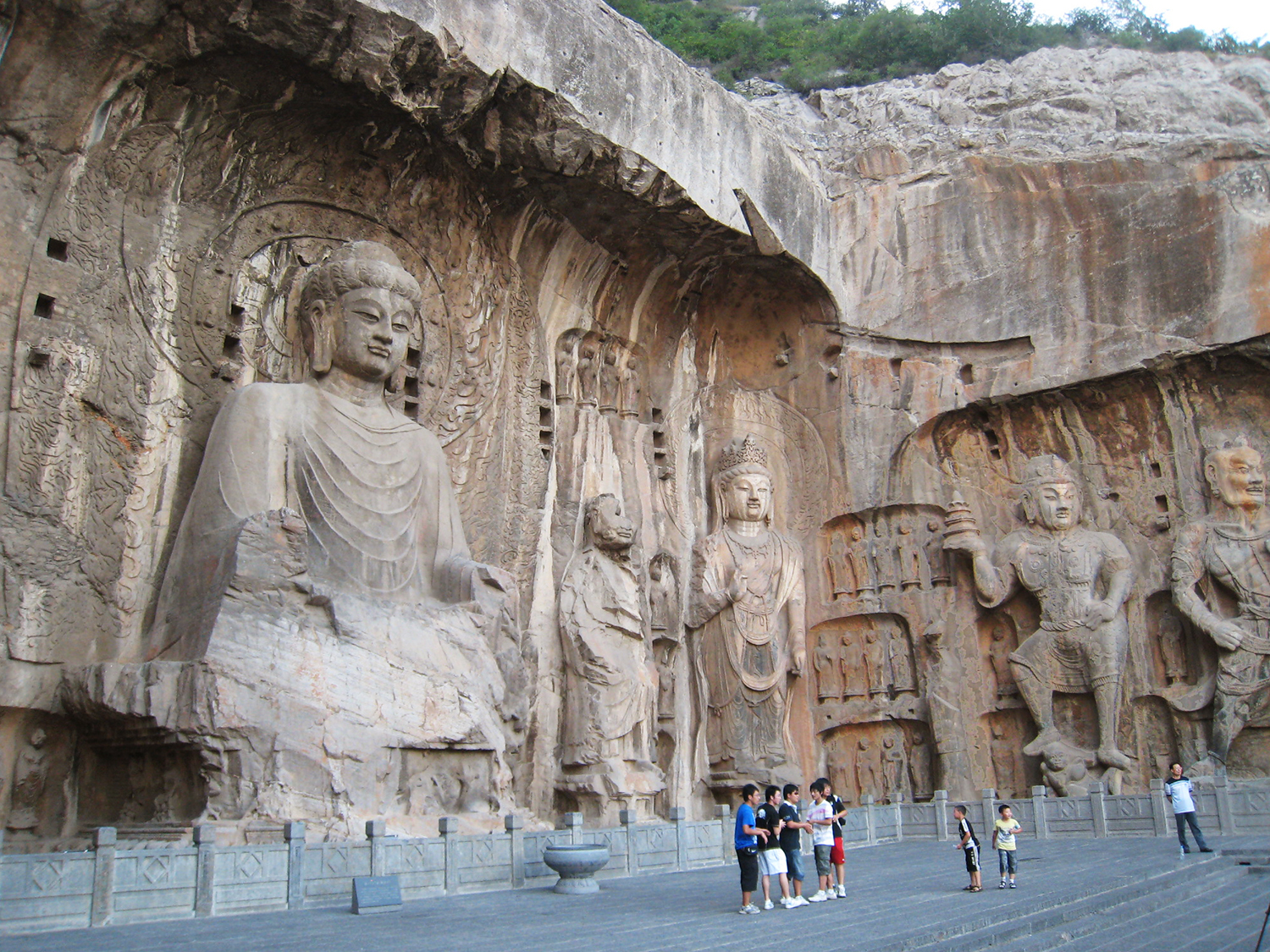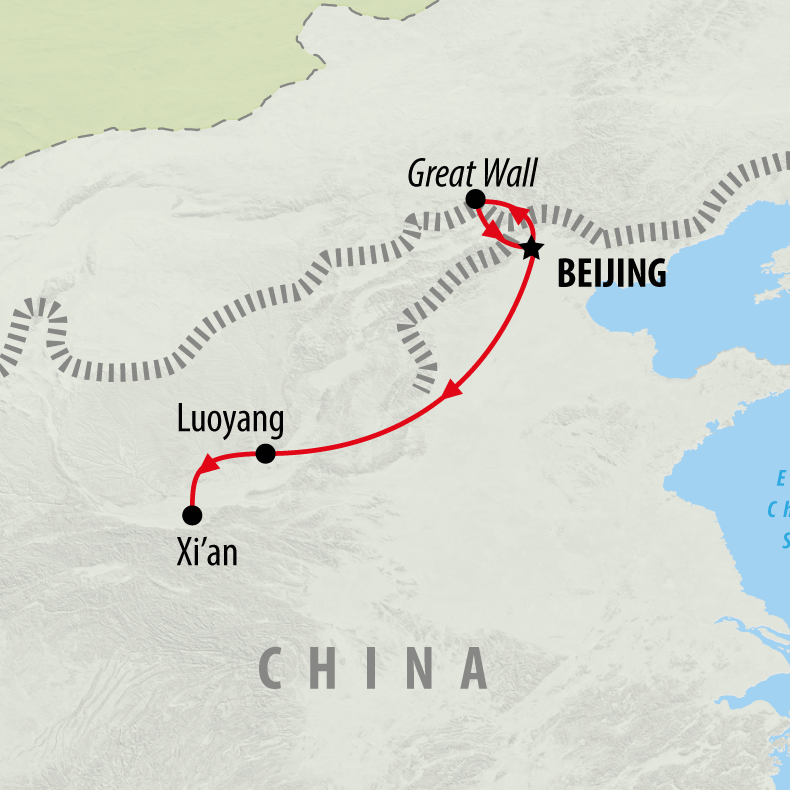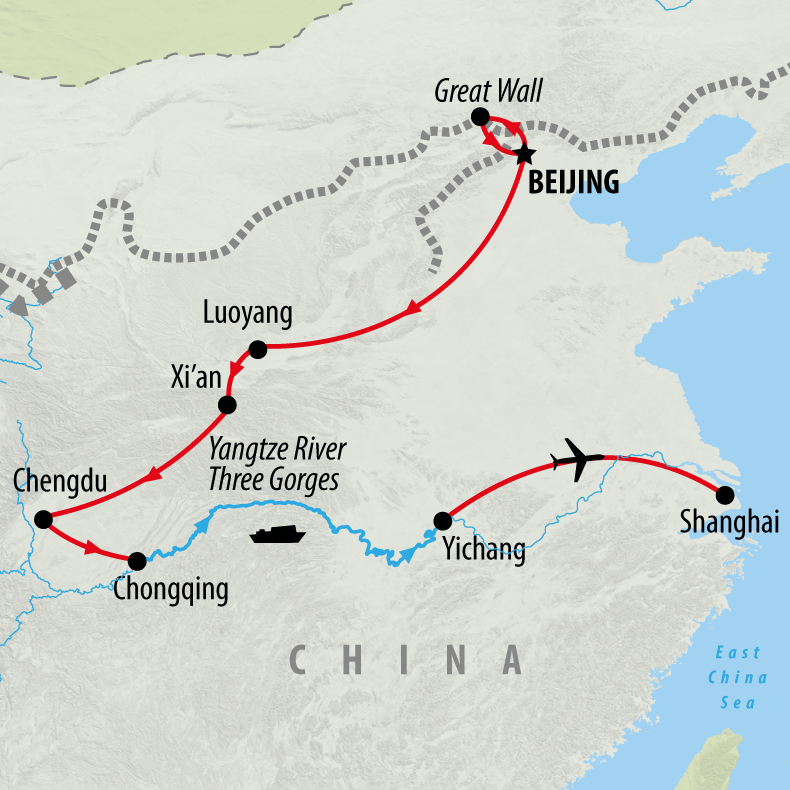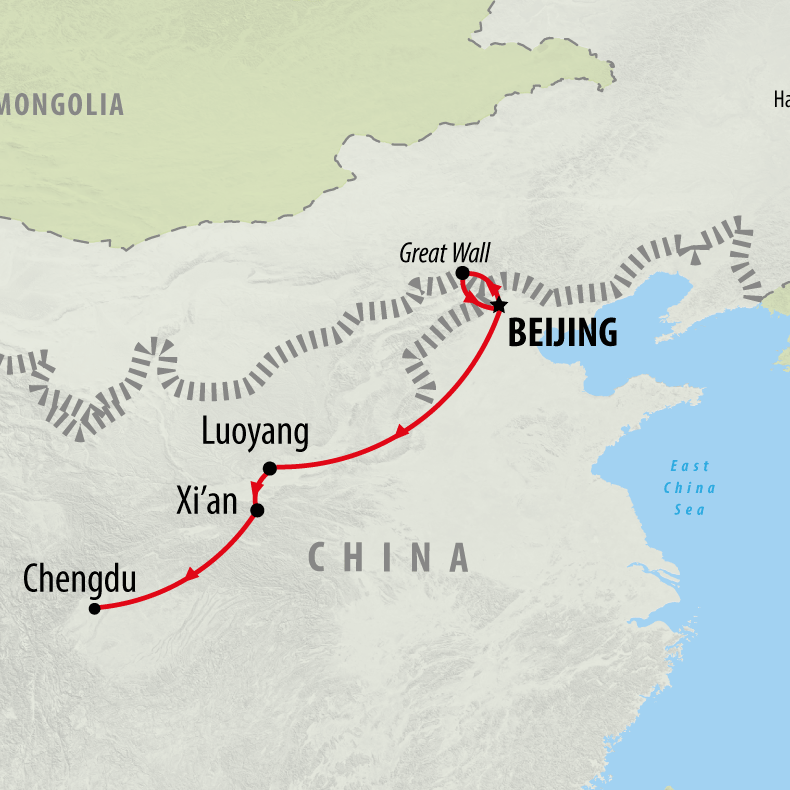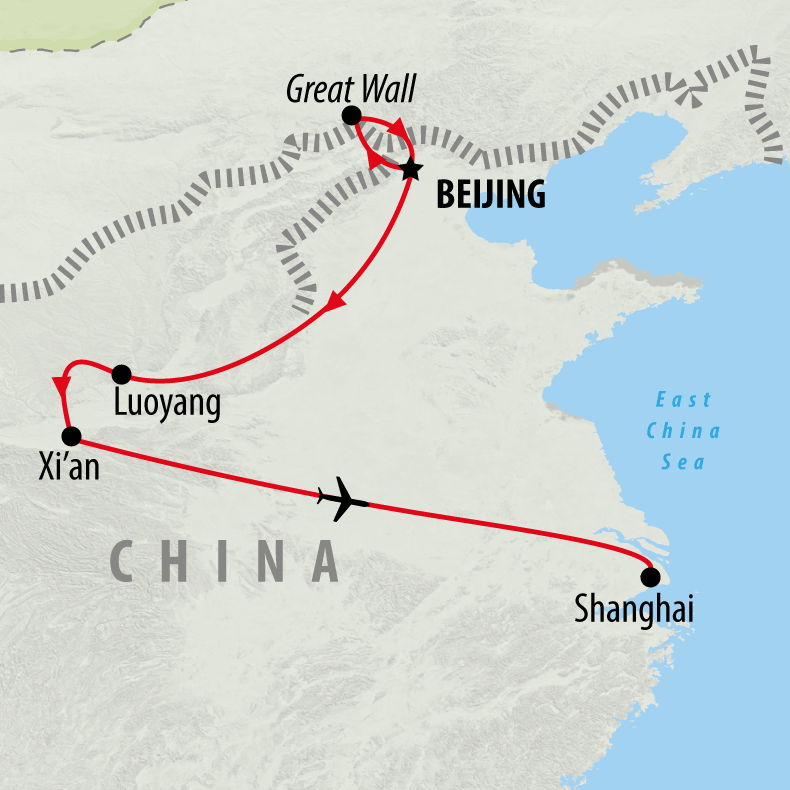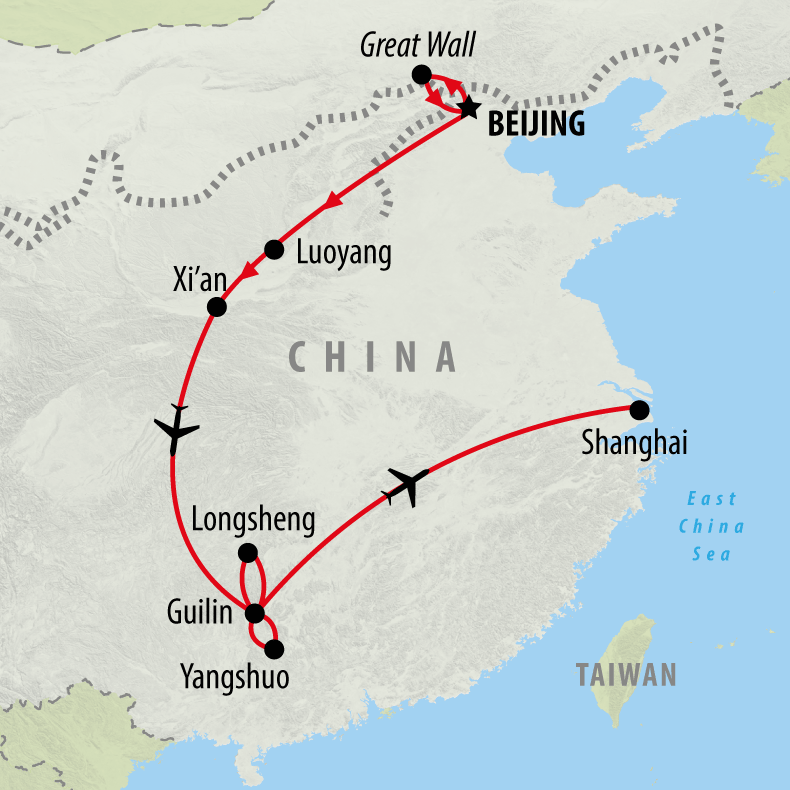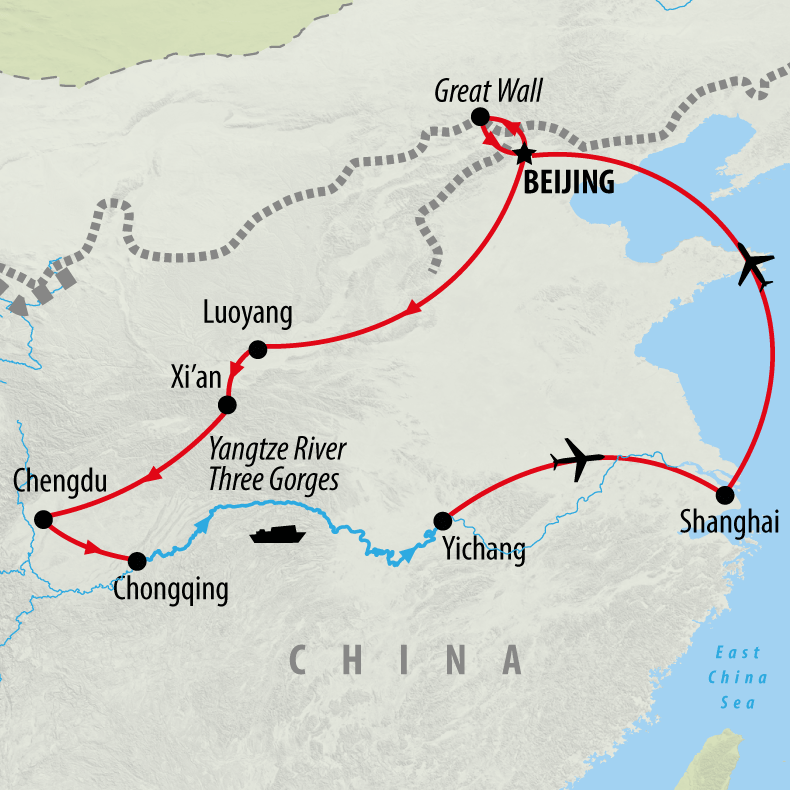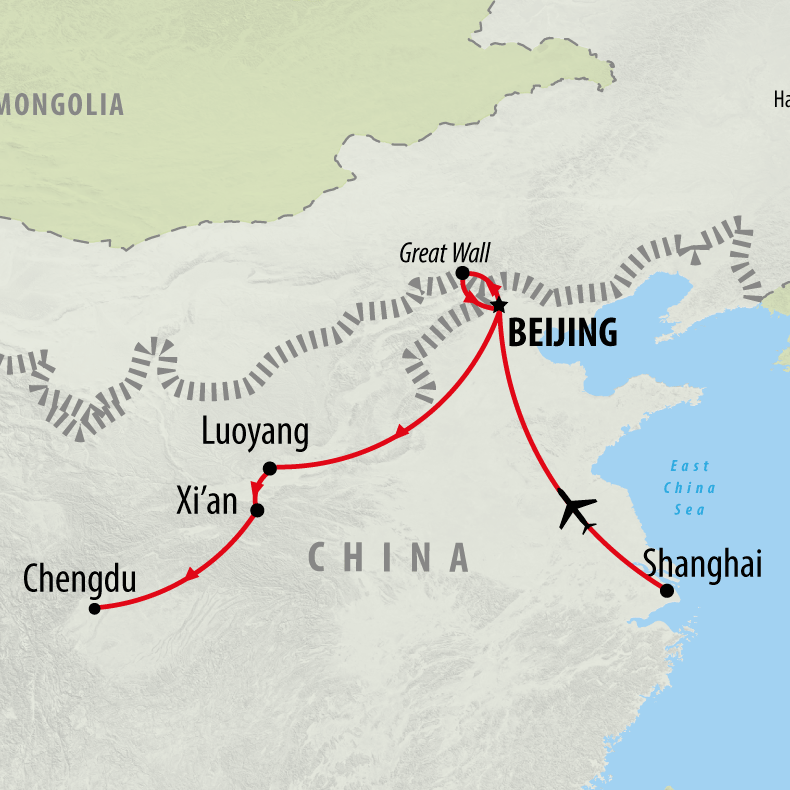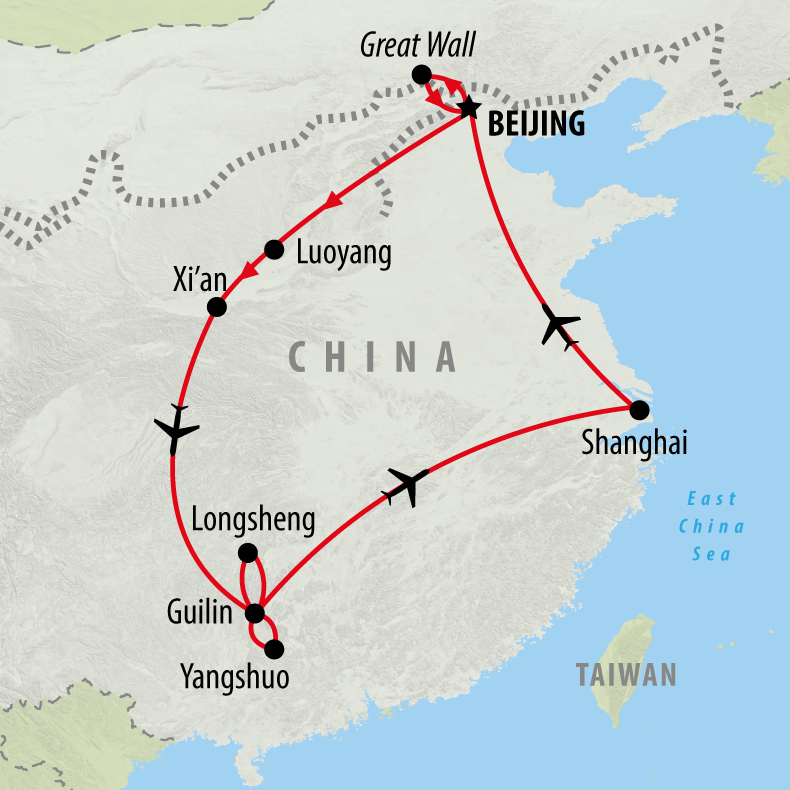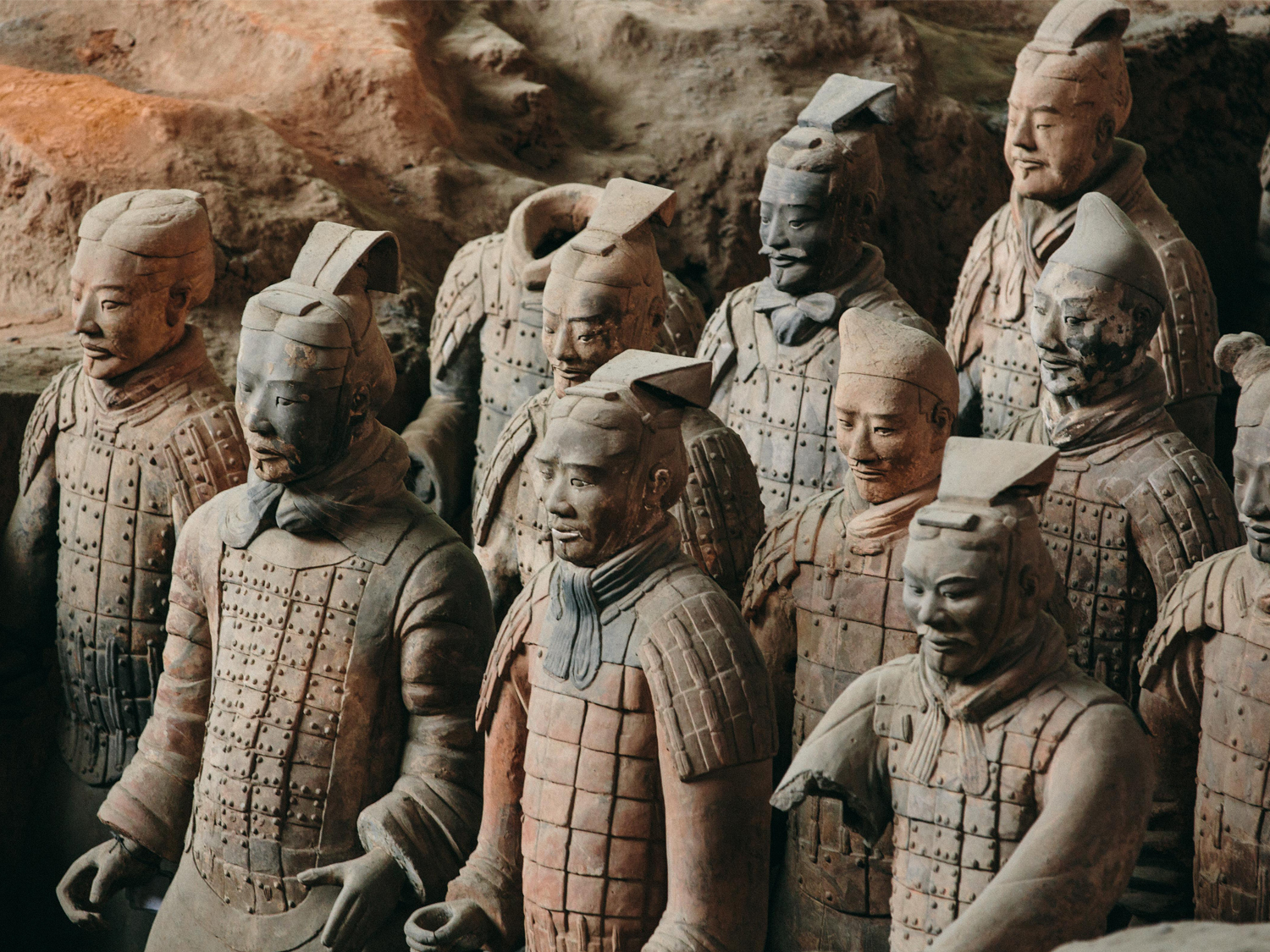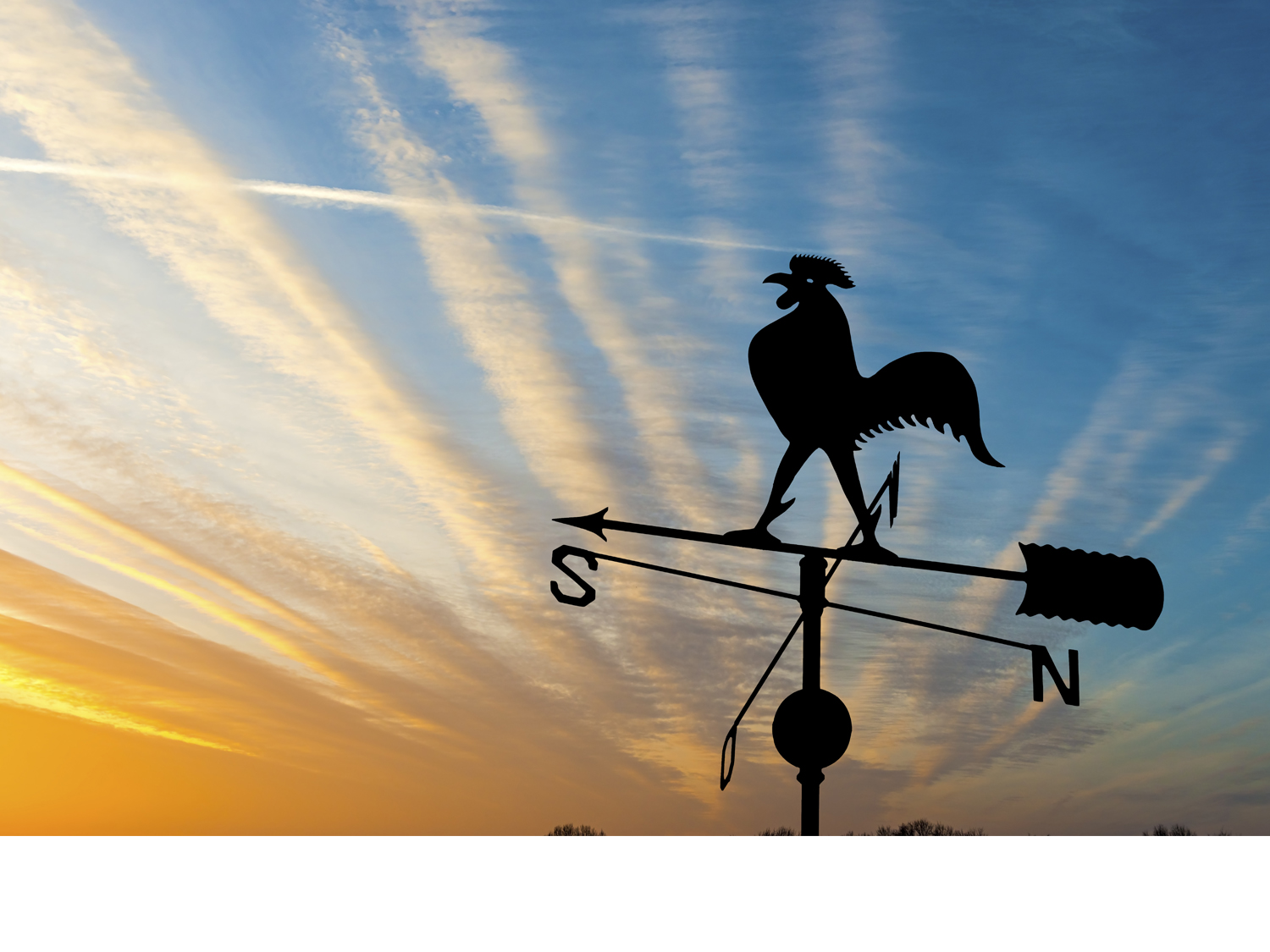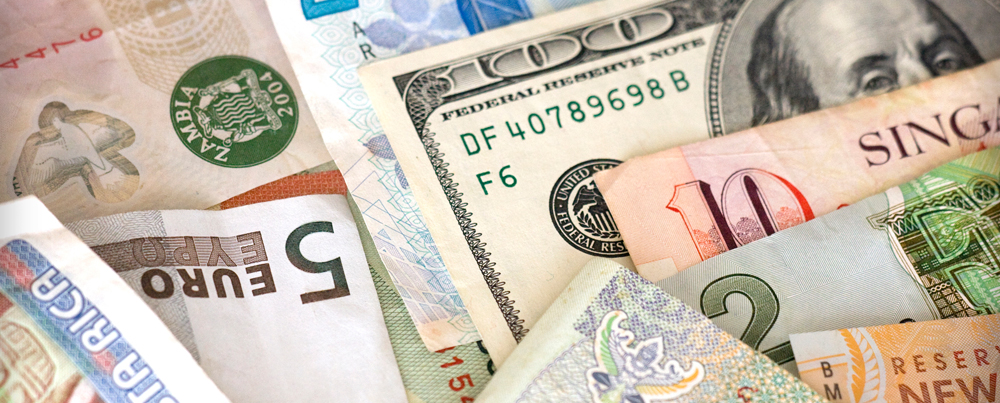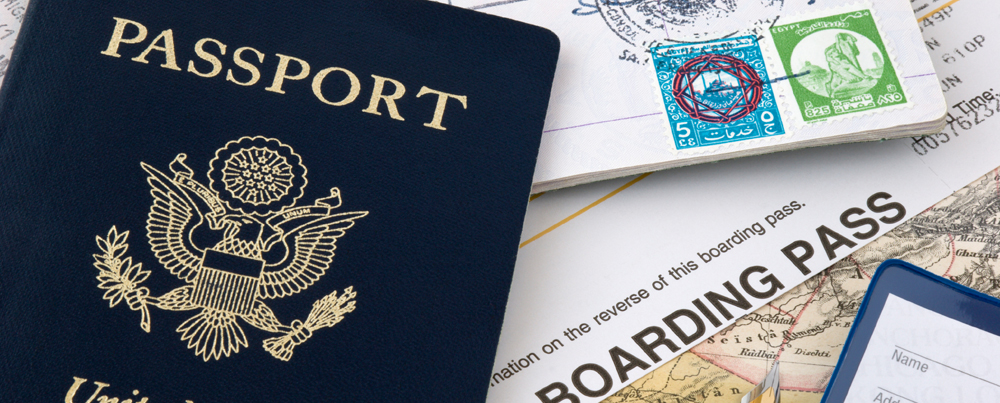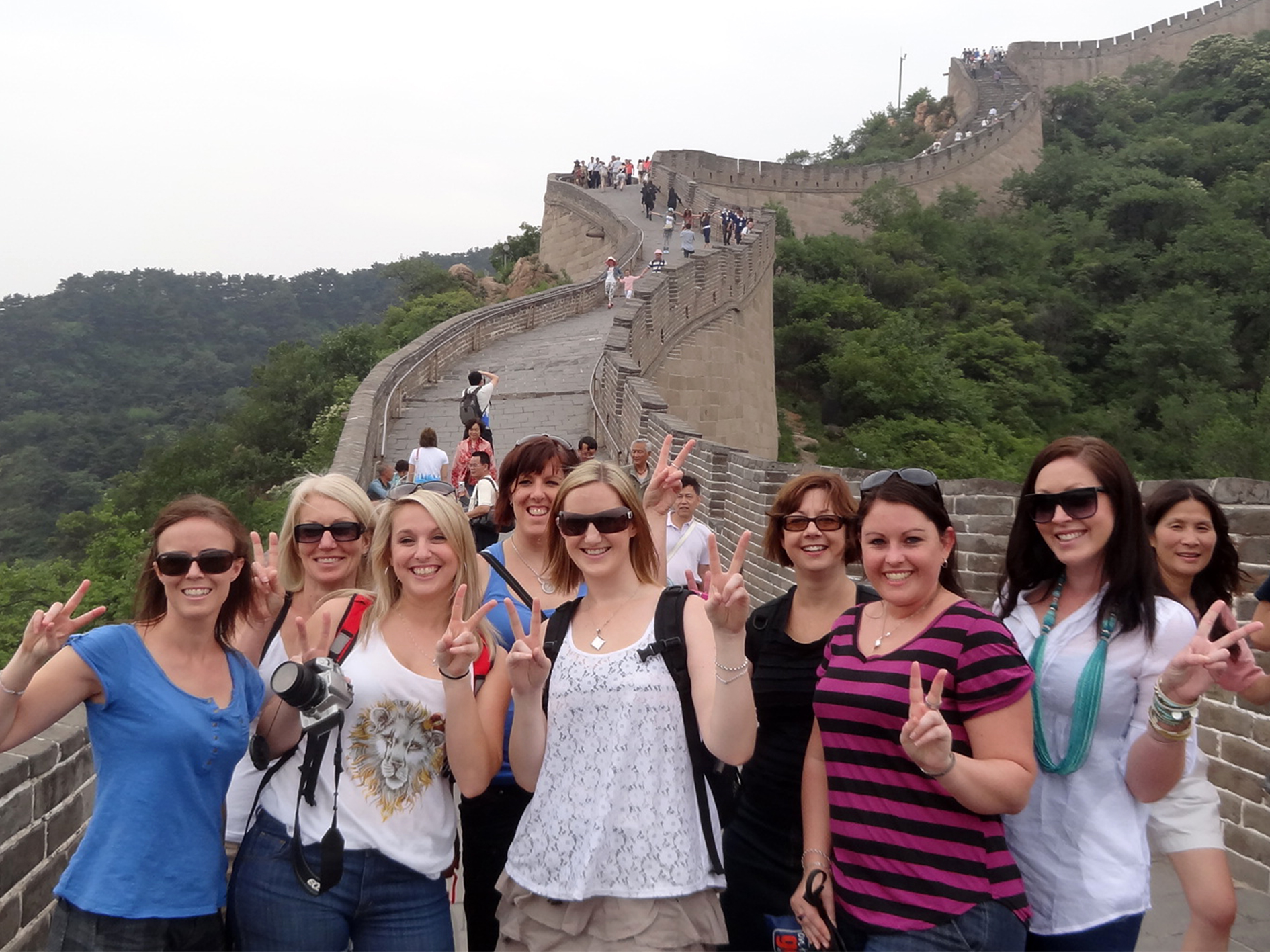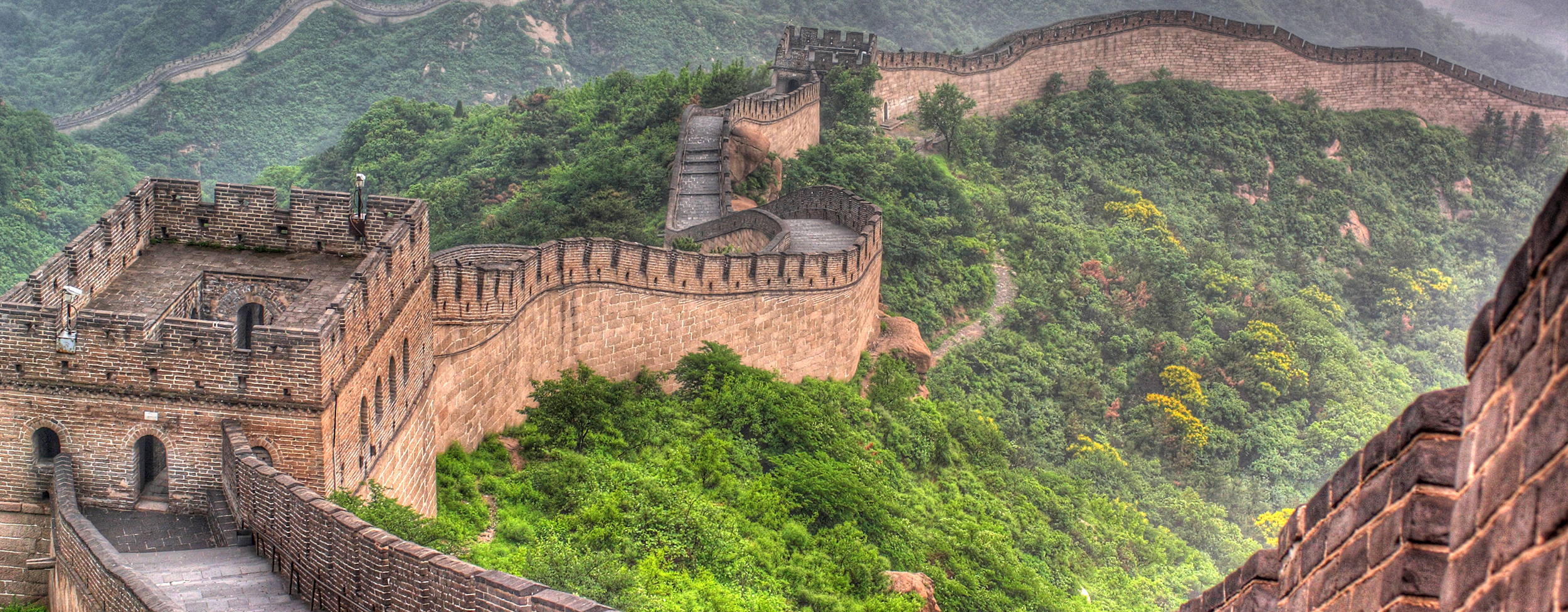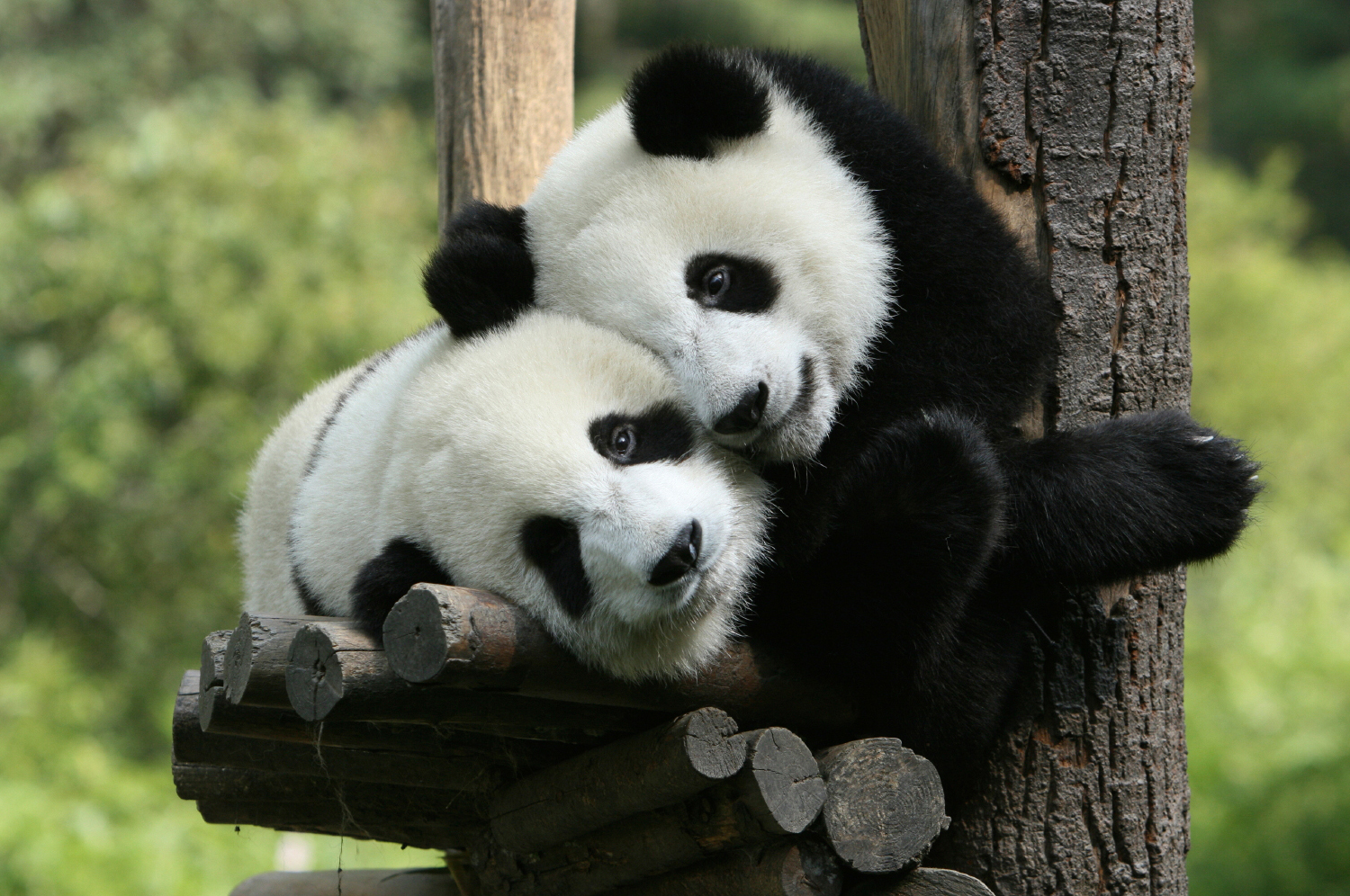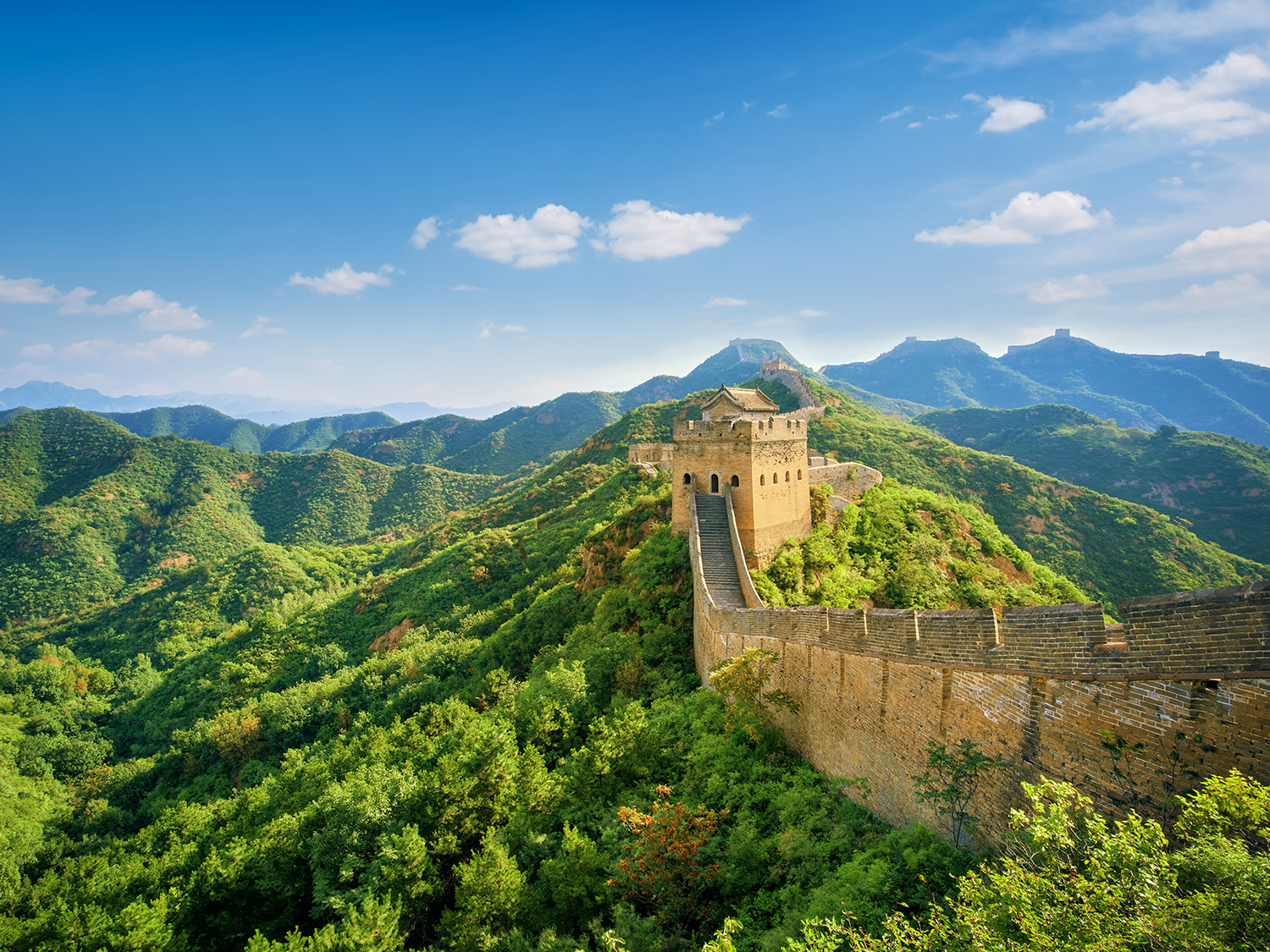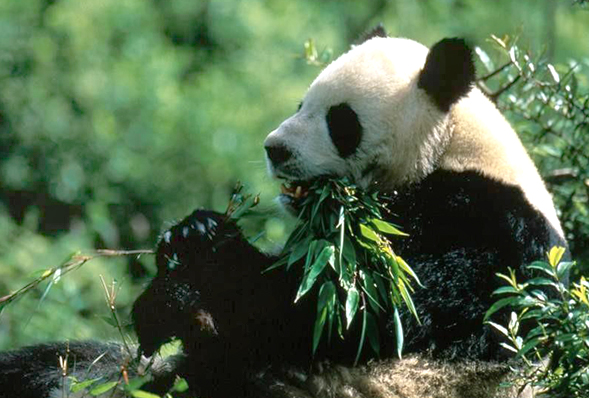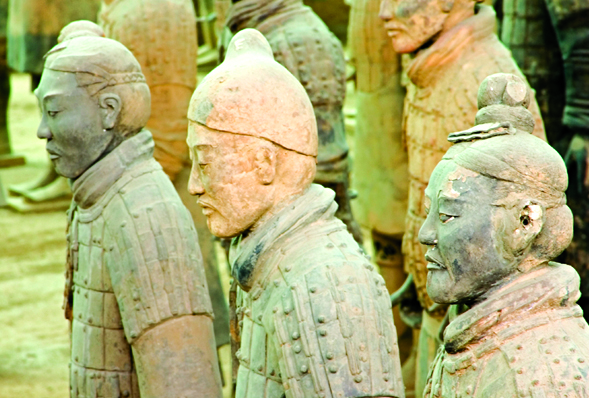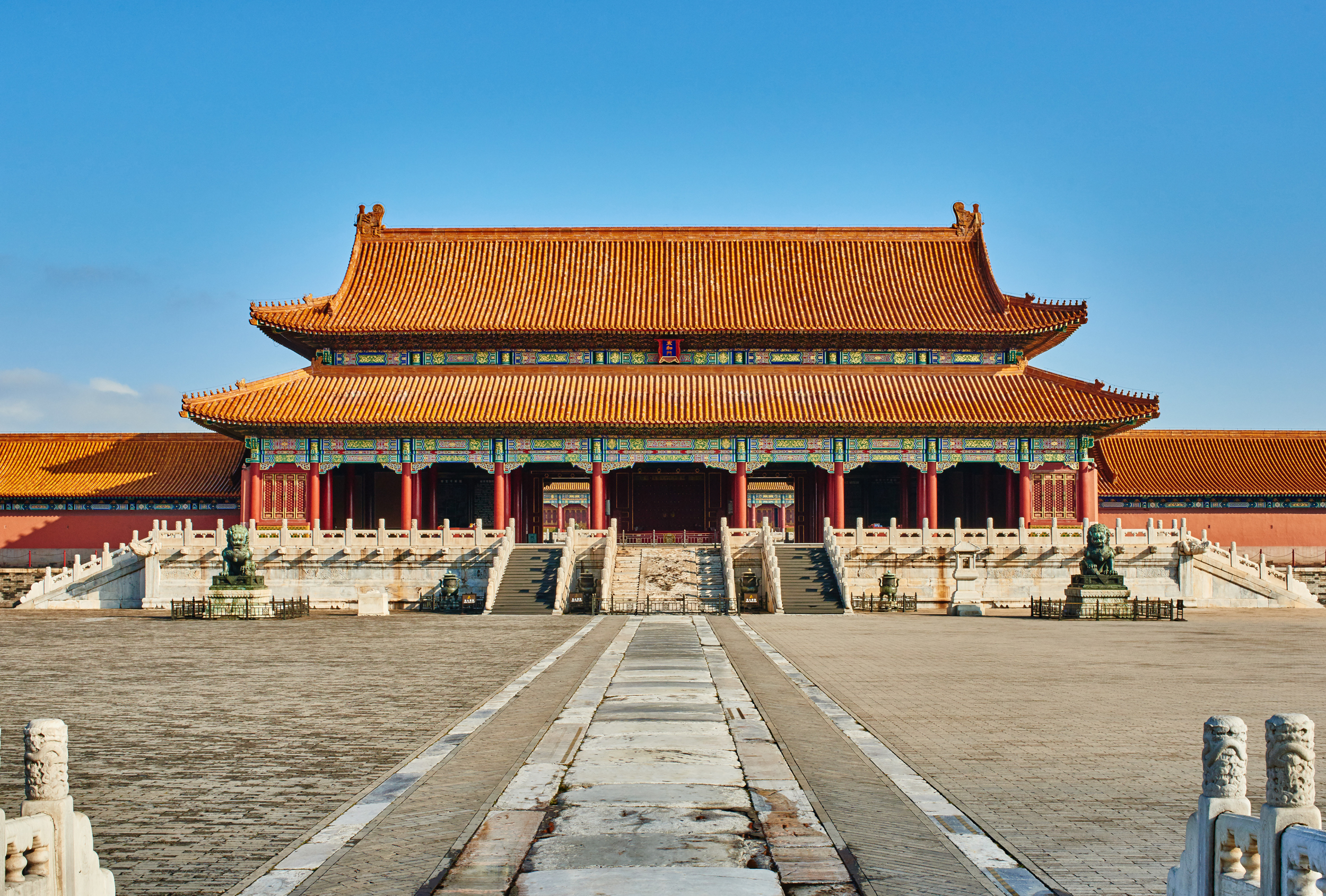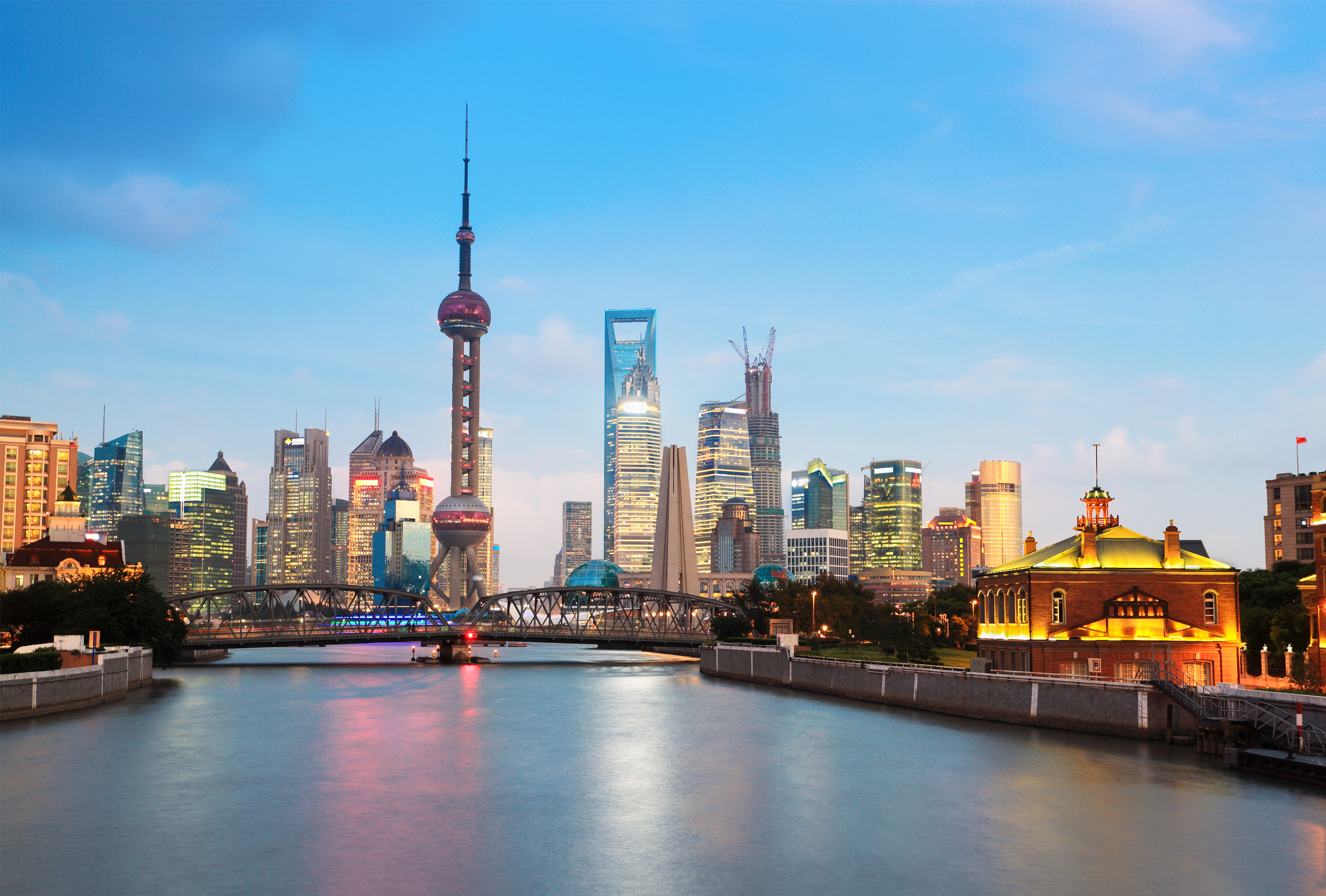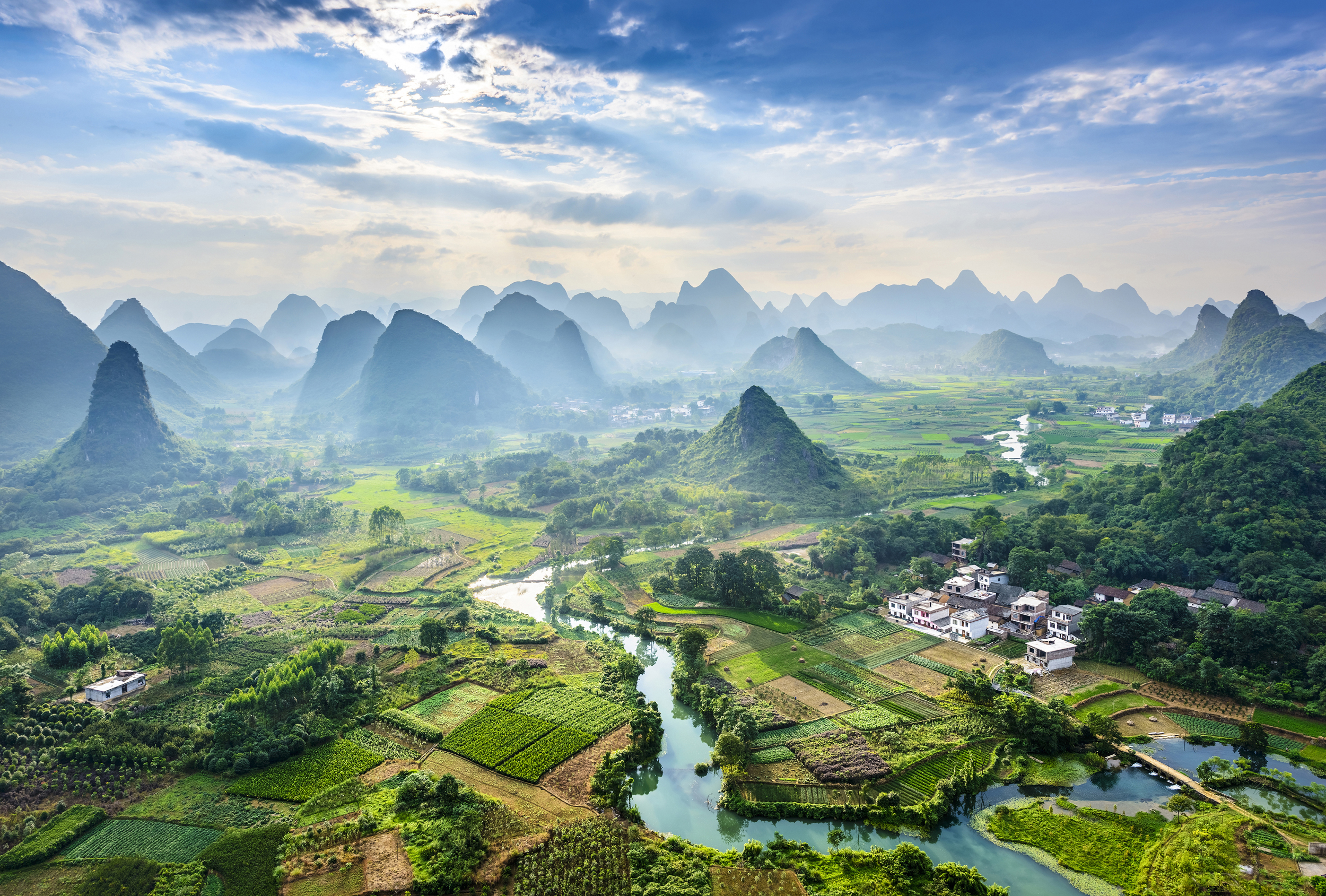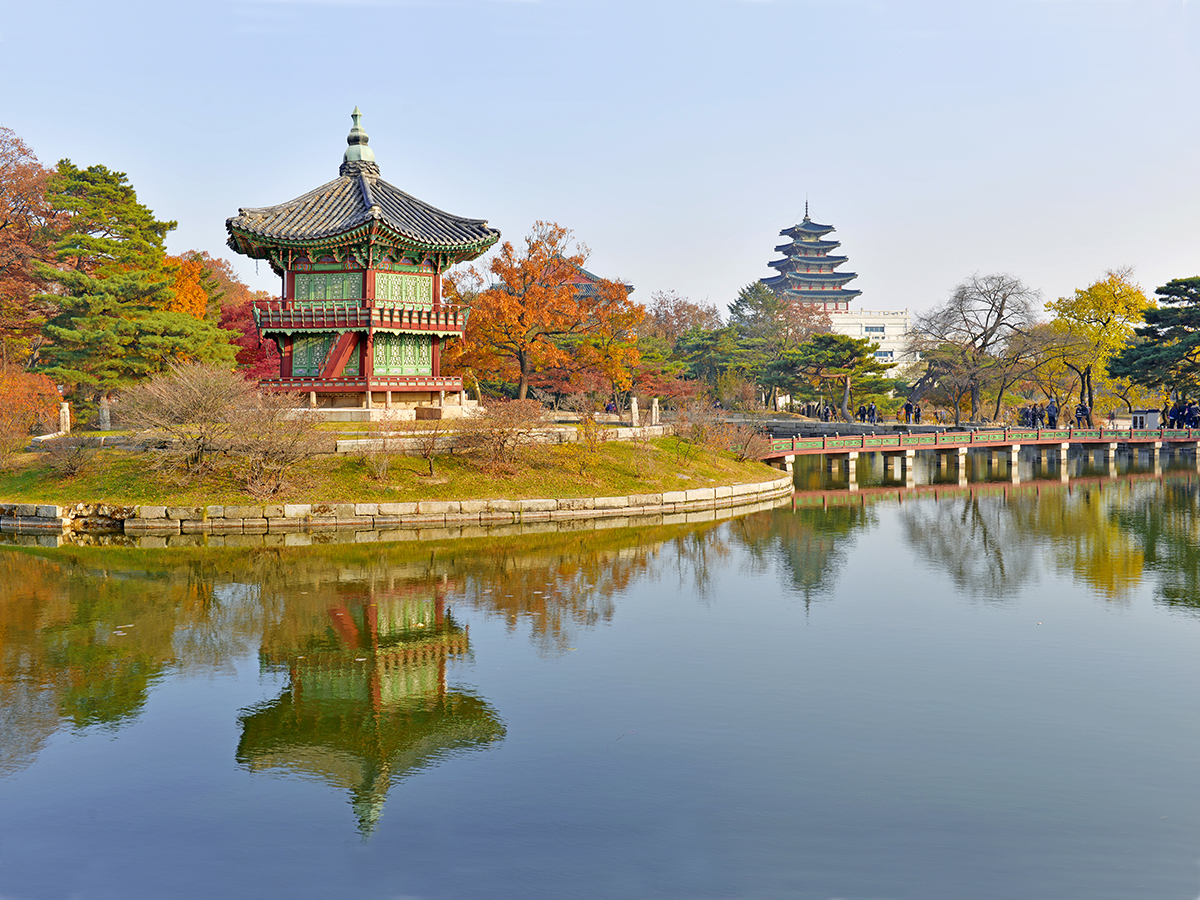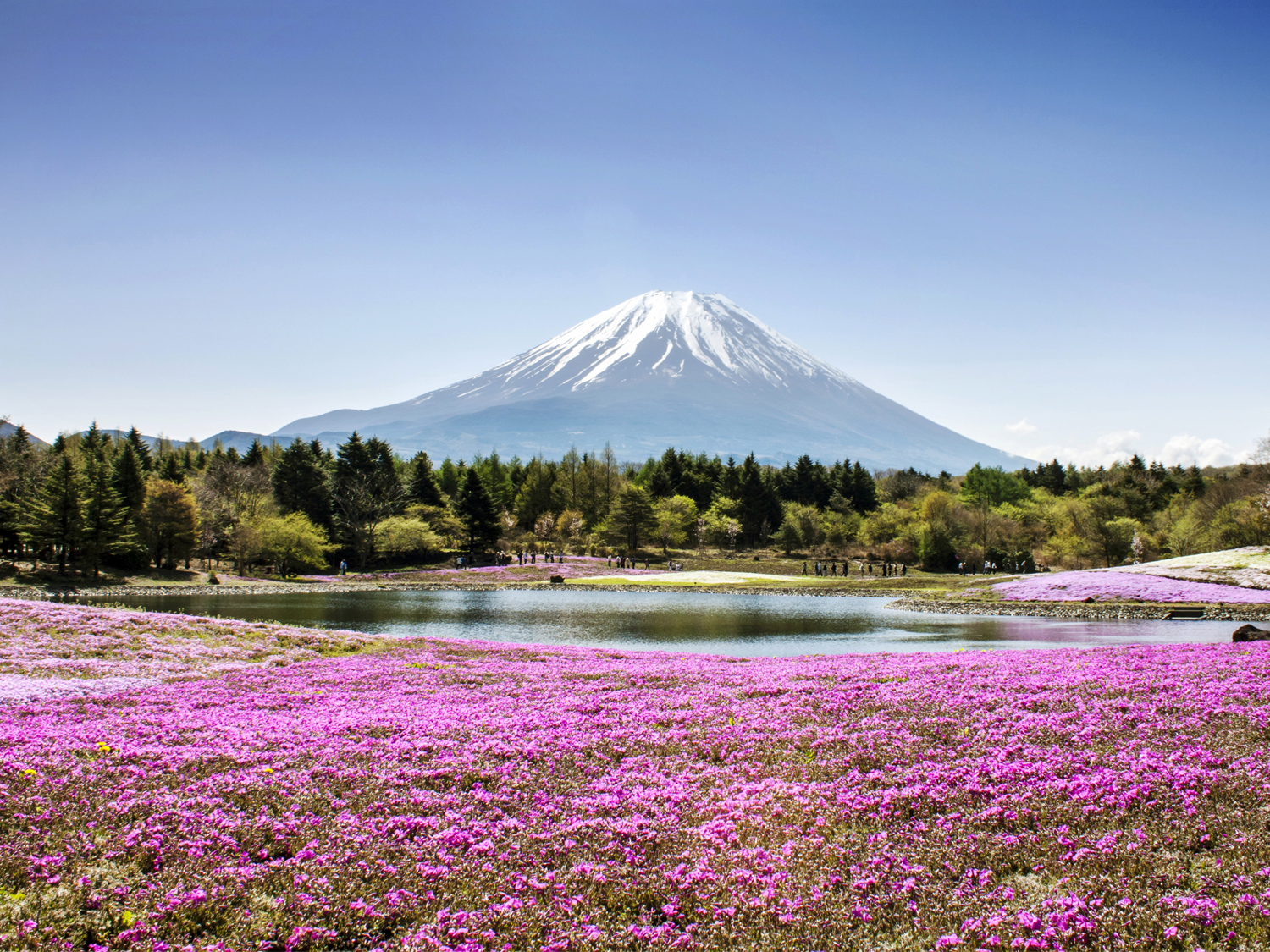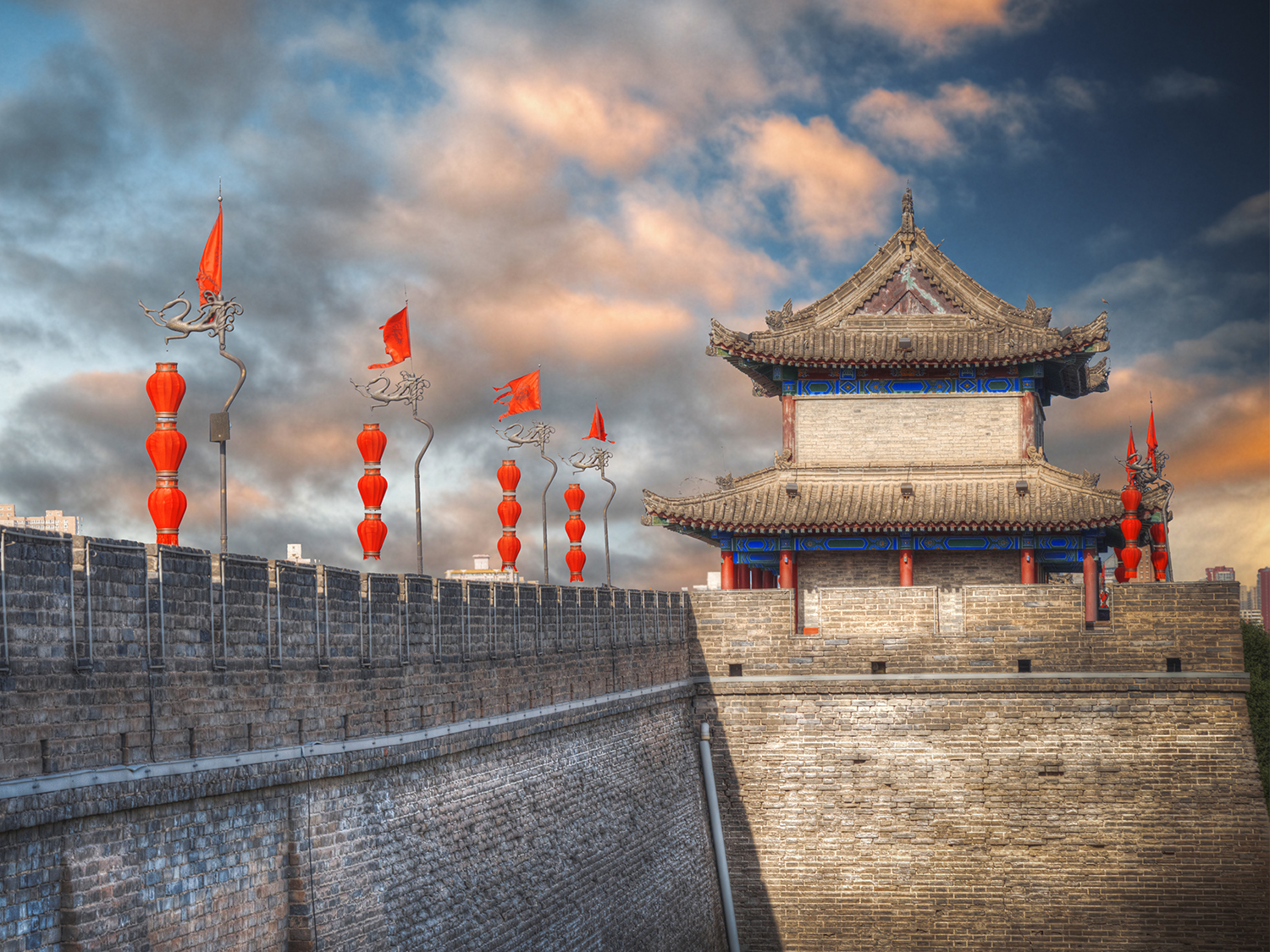Trips and Tours to LuoyangExplore the famous Longmen Caves, a marvel of ancient Chinese art.
When do you want to go?
2024
I'm flexible
Passengers
Adults (18+)
Children (0 - 17)
Visit Luoyang
The ancient city of Luoyang was the capital of thirteen Chinese dynasties, starting from the Xia dynasty, which lasted from the 21st to 16th centuries BC, all the way to the Northern Song dynasty in the 10th century. It was once the centre of the Chinese universe and home to over 1,300 Buddhist temples. The city has a rich history with cultural relics throughout the area and nearly 400,000 artefacts kept in museums. Today Luoyang resembles many other modern towns in China, but the Old Town still consists of a maze of narrow, winding streets with old courtyard houses lined with traditional rooftops. The rare ruins of the capitals from the Xia, Shang, Zhou, Han, Wei, Sui, and Tang dynasties are named "Assembly of Five Capitals," but perhaps one of the most popular sites is the White Horse Temple, or Baima Temple, the first officially sanctioned Buddhist temple in China and one of the oldest in the world. For an insight into ancient Luoyang, head to the absorbing Luoyang Museum and observe its collection of Tang dynasty relics.
Tourists primarily visit Luoyang for the nearby Longmen Caves, one of China's few surviving masterpieces of Buddhist rock carving. This intriguing UNESCO-listed site was originally used in 494 AD, and more than 100,000 images and statues of Buddha appeared over the next 200 years. April is a particularly great time to visit when the peony comes into full bloom and the annual Luoyang Peony Festival takes place. Celebrating the long history of peonies in Luoyang, the city is full of colour and fragrance during this time.
Tours to Luoyang
Join us on a group tour to Luoyang, where you can explore the Longmen Caves, enjoy the local cuisine at Old City Shizi Street, and visit the legendary Shaolin Monastery, reputed as the birthplace of Chinese martial arts. These are a few of the things you can do when visiting Luoyang. As one of the oldest cities in China, history runs deeply through the veins of the city, waiting to be explored.
What to Expect when visiting Luoyang
Luoyang is one of China's most ancient and historically significant cities. Known as one of the Four Great Ancient Capitals, Luoyang has over 4,000 years of history. Visiting Luoyang offers a deep dive into Chinese culture and heritage. The city is best known for its proximity to the Longmen Grottoes, a UNESCO World Heritage site featuring thousands of intricately carved Buddhist statues and reliefs in limestone cliffs. These grottoes, which date back to the 5th century, are a breath-taking example of ancient art and religion. The city is also home to beautiful temples, including the White Horse Temple, thought to be the first Buddhist temple in China, and the Shaolin Temple, regarded as the birthplace of Shaolin Kung Fu.
In spring, the city comes alive with the Luoyang Peony Festival, where the city’s parks and gardens are filled with blooming peonies, considered the national flower of China. Wangcheng Park is one of the best places to experience this floral spectacle, offering a peaceful retreat within the urban area. The city has a relaxed atmosphere, and you’ll find a blend of ancient and modern architecture, with bustling markets and traditional street food stalls coexisting with modern developments. Dishes like Luoyang water banquet, a multi-course meal, are famous in the region and offer a unique culinary experience rooted in imperial tradition. Overall, Luoyang offers a unique opportunity to connect with China’s deep historical roots, spiritual heritage, and cultural richness.
What to do in Luoyang
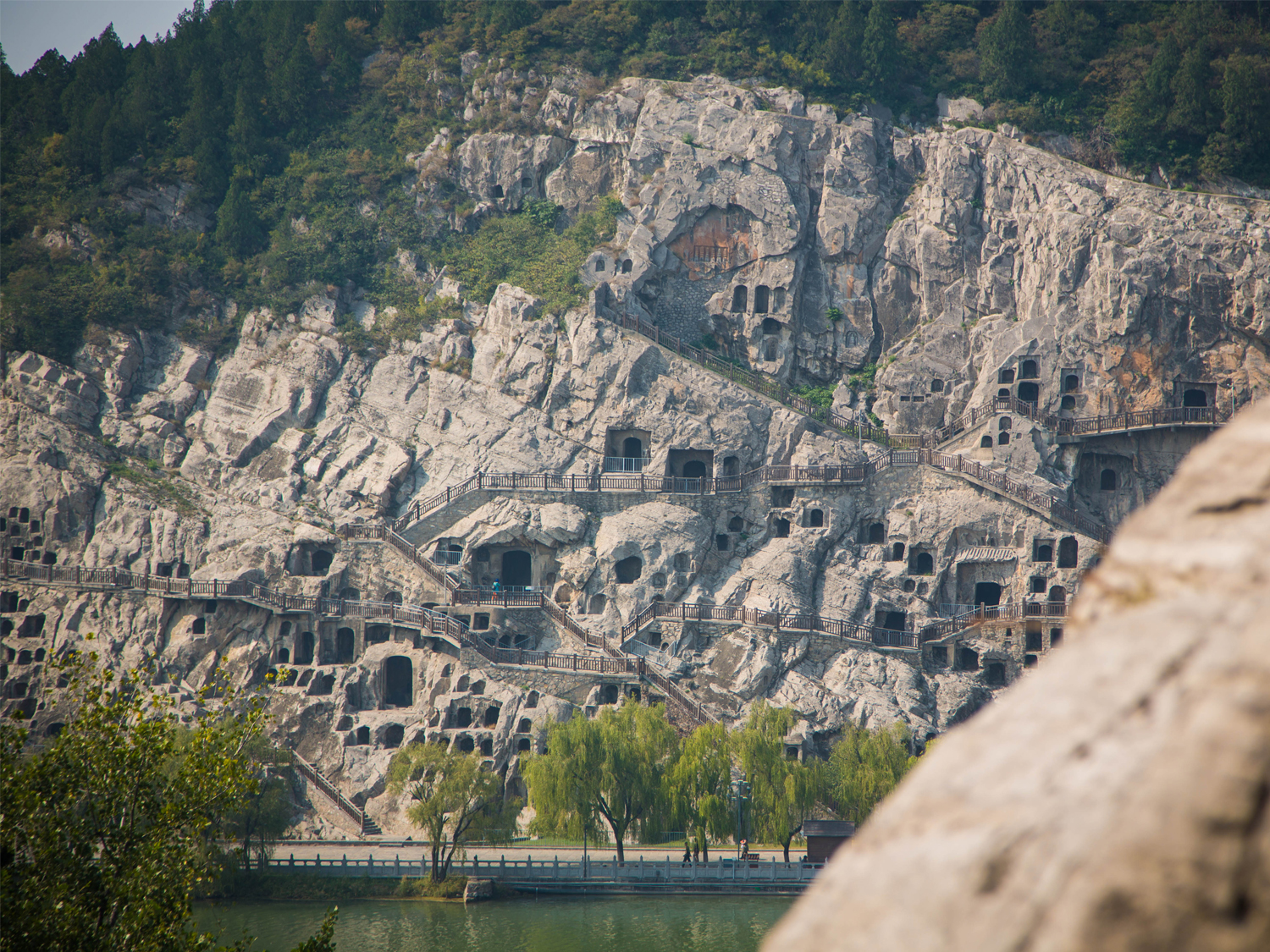
Longmen Caves
Prepare to be captivated by the Longmen Caves, a UNESCO World Heritage site. These remarkable caves are perched along the cliffs lining the Yi River, and they house the world's most extensive collection of celestial art treasures. The caves boast the largest array of statues to be found anywhere on Earth. This enduring art form, etched into the stone, has not only withstood the test of time but has also borne witness to the reign of over 10 dynasties spanning more than 1,400 years. The statues are some of the finest examples of Chinese Buddhist art; the grandeur of the statues has to be seen in person to be fully understood, making them a testament to ancient Chinese art.
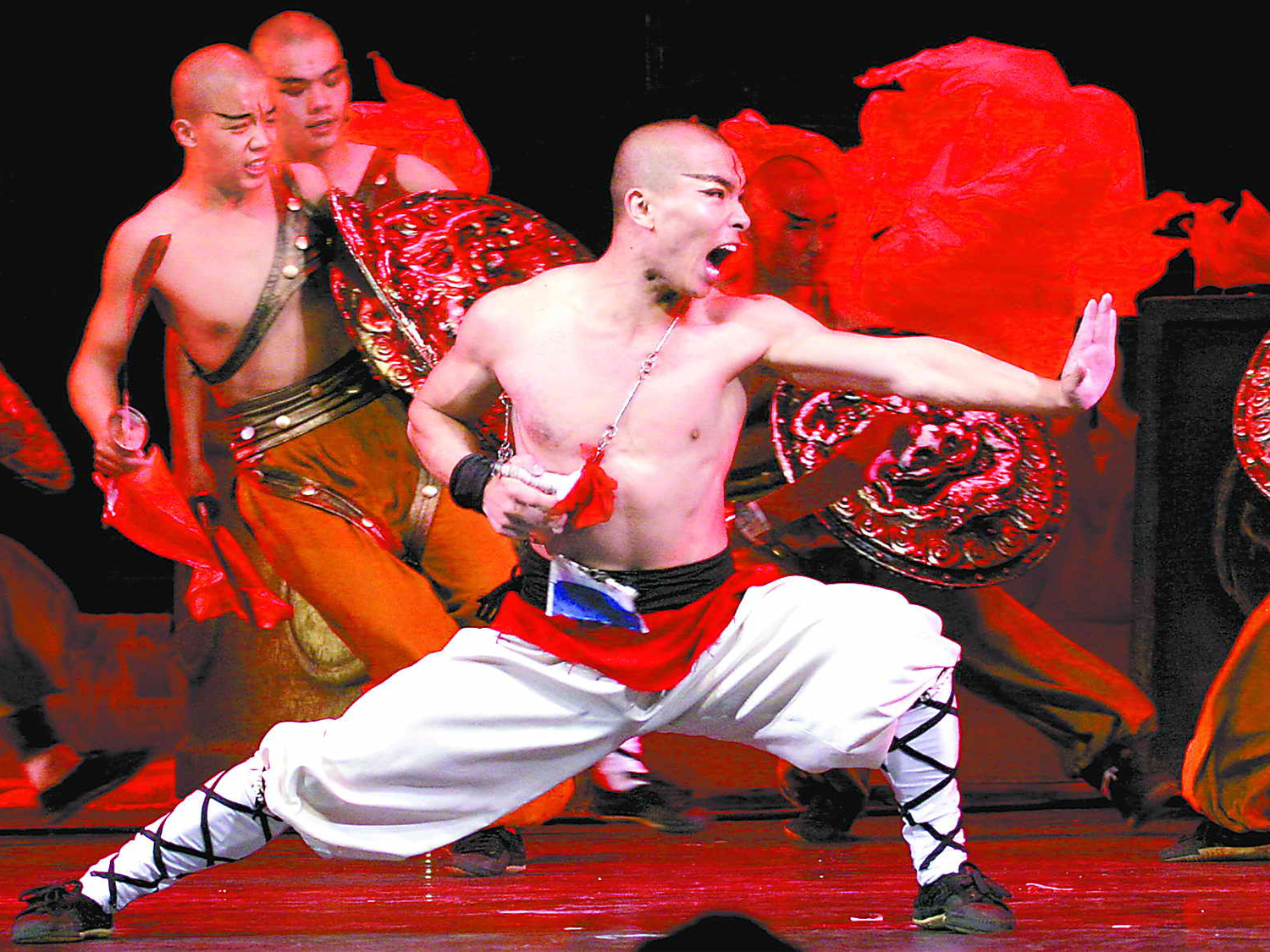
Shaolin Temple
Often revered as the birthplace of Shaolin Kung Fu. Located on the slopes of Mount Song, this ancient temple, founded in the 5th century, has become a symbol of China's spiritual and martial traditions. As you explore the temple grounds, you’ll find sacred halls, peaceful courtyards, and towering pagodas, all steeped in centuries of history. The temple is particularly famous for its warrior monks who practice Shaolin Kung Fu, and visitors can witness impressive martial arts demonstrations and even attend classes to learn some of the basic techniques. The nearby Pagoda Forest, a collection of ancient stone stupas, serves as the burial site for generations of monks and adds to the temple’s serene, spiritual atmosphere. Shaolin Temple offers a unique blend of religious significance and cultural heritage, making it a must-visit for anyone interested in Chinese history, Buddhism, or martial arts.
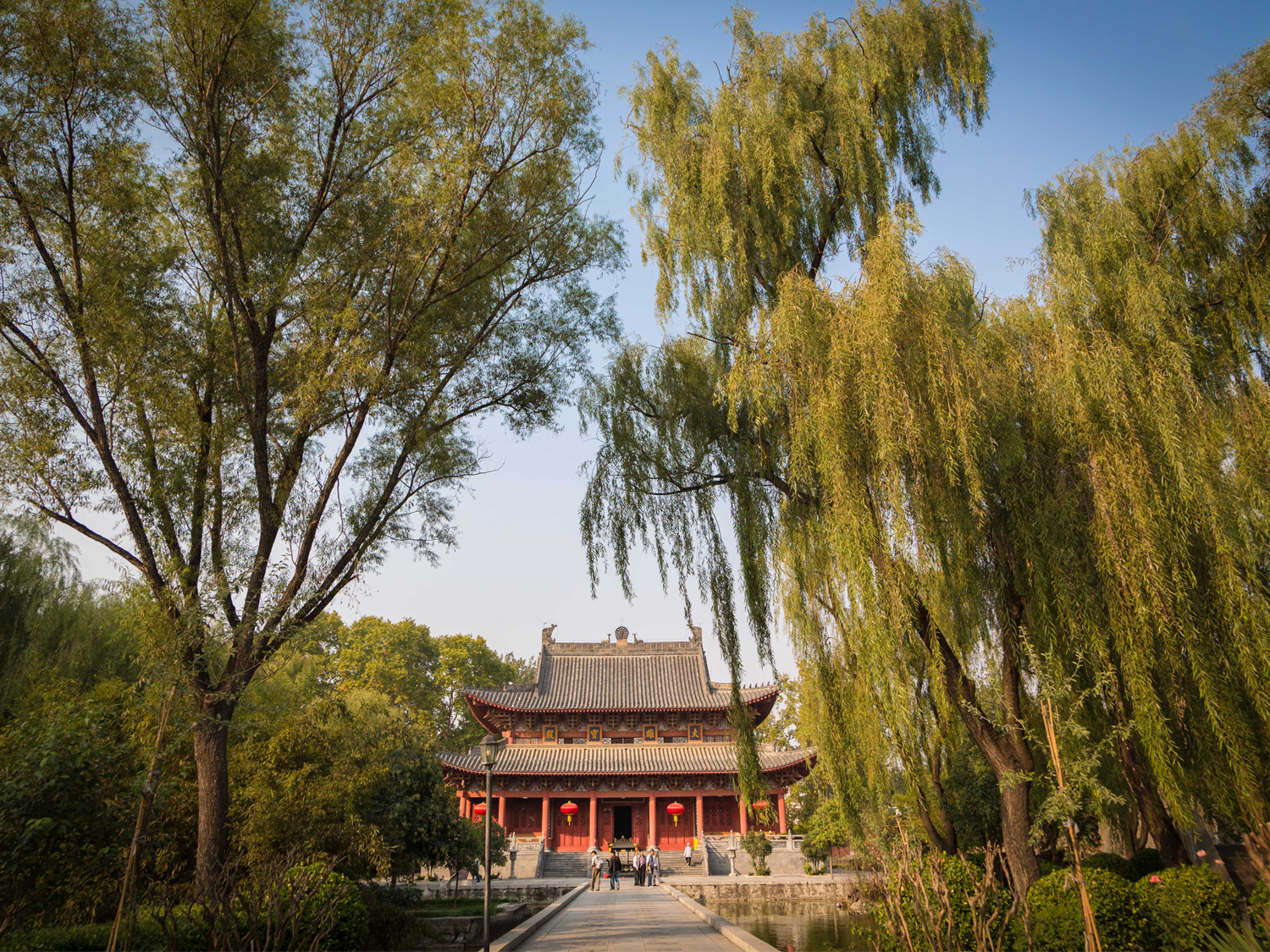
White Horse Temple
The White Horse Temple in Luoyang, often regarded as the cradle of Chinese Buddhism, is a serene and historically profound site that offers a glimpse into China's ancient spiritual heritage. Established in the 1st century AD, it is considered the first Buddhist temple in China, founded to honour the arrival of Buddhist scriptures and monks from India. The temple complex, with its elegantly designed pagodas, tranquil courtyards, and intricately decorated halls, embodies classical Chinese architectural beauty and spiritual serenity. As you wander through its grounds, the peaceful ambiance and the historical significance of the site provide a deep sense of connection to the early days of Buddhism in China. The White Horse Temple remains a vibrant centre for Buddhist practice and pilgrimage, making it a must-visit destination for those interested in the intersection of history, culture, and spirituality.
When is the best time to visit Luoyang?
The best time to visit Luoyang is during the spring and autumn months. During these periods, the weather is mild and pleasant, making it ideal for exploring the city and its surrounding attractions. Spring is particularly special if you visit during the Luoyang Peony Festival, which usually takes place in April. The city's gardens and parks burst into colour with thousands of blooming peonies, offering a spectacular and fragrant experience. Autumn is another great time to visit, as the temperatures are comfortable and the humidity is lower, making it more enjoyable for sightseeing. This is also a good time to explore the historical sites and nearby attractions like the Longmen Grottoes and the Shaolin Temple.
Conclusion
A guided tour of Luoyang is an enriching experience into China’s deep past, allowing visitors to fully appreciate the city’s profound historical and cultural significance. With a knowledgeable guide leading the way, you can delve deeper into the stories behind iconic sites like the Longmen Caves and the White Horse Temple, gaining insights that might otherwise be missed. The expertise of a guide ensures a well-structured itinerary, efficient navigation of key attractions, and the opportunity to explore off-the-beaten-path gems with ease. Additionally, a guided tour provides a seamless travel experience, with local expertise enhancing your understanding of Luoyang's rich heritage and vibrant traditions. Whether you're marvelling at ancient Buddhist art, enjoying a cultural festival, or discovering local culinary delights, a guided tour in Luoyang ensures a memorable and immersive journey through one of China’s most historically significant cities.
Frequently asked questions
What are the must-see attractions in Luoyang?
Key attractions include the Longmen Grottoes, renowned for their impressive Buddhist carvings; the White Horse Temple, China's oldest Buddhist temple; and Wangcheng Park, known for its beautiful gardens and historical significance. The Luoyang Museum offers a fascinating look into the city's history and artifacts.
Are there any local customs or etiquette I should be aware of?
When visiting temples and historical sites, dress modestly and be respectful of religious practices. It’s polite to ask for permission before taking photos, especially of people. Also, while interacting with locals, a friendly demeanour and respectful attitude are appreciated.
Is Luoyang a good destination for families?
Yes, Luoyang is family-friendly with a range of activities suitable for all ages. Kids will enjoy the historical sites, cultural experiences, and the Peony Festival in spring. Attractions like the Longmen Grottoes and Shaolin Temple offer educational and entertaining experiences for children and adults alike.
What local foods should I try in Luoyang?
Luoyang is famous for its water banquet, a multi-course meal featuring a variety of dishes in a flavourful broth. Other local specialties include Luoyang roast duck, noodles, and various street foods. Exploring local markets and food stalls can also provide a taste of regional culinary delights.
China travel guides
Highlights of China
Our top picks of things to see and do in China!
The Great Wall
Stretching for more than 20,000km from the Yellow Sea in the eats to the Gobi Desert in the west, the Great Wall of China is known around the world and is a major factor in many people's decision to visit China. Dating back more than 2,300 years, the UNESCO-listed wall measures 7 metres in width and 6-14 metres in height with over 25,000 battlements snaking a path along precarious mountain ridges and thick forests.
See pandas in Chengdu
Known for being absolutely adorable, Great Pandas are endemic to china making it the perfect place to see them in their natural habitat. Watch them as they play, sleep and wander around their conservation sites and learn all about China's effort to increase the panda population to stop these beautiful bears from going extinct.
The Terracotta army in Xi'an
In 1976 three farmers near the city of Xi'an were digging a well and in doing so discovered one of China's greatest treasures - Emperor Qin's 7000-strong terracotta army. Believed to have been made 2200 years ago these life-size warriors stand in military formation in excavated pits under the cover of a modern protective hanger. Made of local clay, no two faces are alike – each is said to be an individual portrait.
Beijing
Capital of the People’s Republic, Beijing is China’s political, economic and cultural centre. With a chequered history, Beijing was established in 1045 BC and for 800 years served as the capital of several dynasties. At first glance Beijing can appear as nothing more than a modern cosmopolitan city with soaring skyscrapers, sprawls of apartment blocks and a crisscross of freeways. But hidden amid the concrete and glass one can still find remnants of the city’s past and evidence of traditional Chinese culture still practised today.
Shanghai
Buzzing with energy and activity from its gleaming sky scrapers all the way to its charming Old Town, the mega city of Shanghai epitomises China’s meteoric rise to global power status. Everywhere you look, there is something to do, see or buy, and you're unlikely to ever find yourself having a dull moment during your stay.
Guilin
Renowned for it’s striking, if bizarre scenery - vast areas of karst limestone outcrops that rise up from flat rice paddy fields, and beautiful pagodas, Guilin is often the subject of Chinese painting. On our tours that travel to Guilin, we will visit the enormous and dazzlingly beautiful Reed Flute Caves. The city is filled with a delicious fragrance of Sweet Osmanthus trees and indeed this is the meaning of the name Guilin - "forest of Sweet Osmanthus".
Our customers say
Excellent
4.4 out of 5 based on 275 reviews
